 Your new post is loading...
 Your new post is loading...
The 2016 holiday season will be drawn out as shoppers start buying online early and continue shopping even after Christmas Day, according to Adobe Digital Insights’ “2016 Digital Insights Shopping Predictions” report, which was released today.
For example, 31% of U.S. consumers say they will start their holiday shopping before Nov. 1, up five percentage points from a year ago, according to Adobe’s survey of more than 1,000 U.S. consumers.
Come November, consumers are expected to shop online throughout the season. The report predicts that 57 of the 61 days in November and December will surpass $1 billion, including a streak of 53 consecutive $1 billion plus days. By comparison, the existing longest streak of consecutive $1 billion days occurred during last year’s holiday shopping season.
The report suggests that overall online holiday sales will grow 11.0% to $91.6 billion up from $82.5 billion last year. Just three days—Thanksgiving, Black Friday and Cyber Monday—will account for $8.4 billion, roughly 9.2% of those online sales, according to the Adobe study....
When it comes to digital smarts, Nordstrom, Macy’s, Kohl’s and JC Penney rank at the Genius Level, according to the latest report from think tank L2. But while the industry as a whole is getting sharper, now spending 52% of digital ad budgets on mobile and maximizing customer engagement on Instagram, stores are still no match for the Amazon onslaught.
“Only five years ago, Macy’s apparel and accessories sales were five times that of Amazon, providing a wide lead in a logistically challenging product category that features a high exchange rate,” the new ranking says. “By next year, Wall Street analysts estimate that Amazon will overtake Macy’s as the largest U.S. retailer of apparel and accessories, with sales of $28 billion in the category.”
But Amazon isn’t the only problem. Department stores are also challenged by the fast-fashion wizardry of brands like H&M, Zara and Uniqlo, as well as companies like Coach and Michael Kors cutting back on department-store distribution. “With key partnerships that help differentiate the customer shopping experience under threat, the historical outperformance of department stores versus the S&P 500 has evaporated over the last 18 months,” it says....
In looking to solve this problem and figure out exactly what it is that is convincing consumers to buy online, BigCommerce commissioned a study into the modern consumer journey. We learned how, when, why and where U.S. consumers buy today –– and more so, what is stopping them from doing so.
This information is incredibly important for retailers looking to sustain and grow their revenue. In today’s omni-channel world, brands must be strategic about merchandising on their various channels and need to fully understand why or why not their customers are clicking the buy button –– no matter where it appears.
Check out the infographic below for key insights or read the full State of Omni-Channel Retail Report....
Executives at a number of US retailers may be surprised to see Bloomberg’s headline on Friday: “Retail Sales Rise Most in a Year, Marking U.S. Consumer Comeback.”
This despite a number of America’s top retail chains reporting dire earnings reports and lowering their outlooks this week. Macy’s shares fell to a four-year low this week, with one analyst saying its woes could doom a third of US shopping malls. Kohl’s reported an 87% drop in net income for its most recent quarter. Nordstrom is cost-cutting following its drop. Gap Inc. may close more Old Navy and Banana Republic stores as its portfolio struggles. JCPenney shares sunk 10% on Friday morning after its disappointing quarterly report.
Kohl’s quantified its distress with the report of a sales drop of 3.7 percent and a profits plunge of more than half; sales at stores open at least a year were down by 3.9 percent. This followed an earlier report by Macy’s that first-quarter sales had fallen off by a huge 7.4 percent, while profit plunged by 40 percent; same-store sales were down by 5.6 percent, Macy’s fifth consecutive quarterly decline. Earlier, Gap said its comparable-store sales for the quarter would be down by 5 percent....
The retail model of the future will be a radically different experience from today, largely driven by the changing shopping demands of the younger hyper-connected consumer. Bricks-and-mortar retailing will remain to be a very significant part in retail, however the lines between channels will erode at the benefit of both the customer and the business. Advances in technology will significantly improve the relationships between retailers and customers, much the way analytics is already doing to online shopping.
Real opportunity lies in responding to this change, focusing on delivering a truly integrated and seamless omni-channel experience. The future of retail is an exciting one, and over the next few years we expect to see a number of key developments taking place in stores around the globe...
More consumers prefer to shop in a physical store so they can see and touch products before making a purchase. At the bottom of the list is turning to sales associates for help. Here’s why consumers say they like to shop in stores: - 47% -- See/touch items before buying
- 41% -- Ability to take it home immediately
- 30% -- Take advantage of sales
- 30% -- Redeem offers/coupons
- 22% -- Enjoy the experience (it's fun)
- 20% -- More secure than buying online
- 11% -- Get assistance from sales associates.
During the Mobile Shopping Life Cycle, consumers use their phones a lot, since with mobile consumers can always be shopping. Before they even head to a store, 63% of consumers use their smartphones to help prepare for the shopping trip. And once they get to the store, here’s how they use their phones, according to the survey...
Technology now touches nearly every retail transaction, creating a vastly different shopping experience for retailers and consumers alike, according to a research report published by MasterCard.
The study found that 8 out of 10 global shoppers' purchase decisions are now informed by a digital device, with consumers saying they are smarter shoppers and getting more value than before. However, though in-store sales still account for more than 90% of all retail spending, the result is a more focused in-store shopper buying from a narrower list of unique stores than in years past. 64.180.55.243 This article is copyright 2015 TheWiseMarketer.com.
"Getting smart about smart shoppers is paramount to a retailer's success, yet shoppers consistently report they're frustrated that retailers don't get it," explained Mathieu Loury, senior vice president of Merchant Solutions for MasterCard Advisors, the professional services arm of MasterCard. "The good news is that the solutions exist to both analyse and answer these expectations-meeting your omnishoppers every step of their empowered journey, and creating an ecosystem that propels them forward."...
Robert Moore from RJMetrics took this a step further, identifying that 11 percent (110,000) of the top 1M websites on the internet by Alexa traffic ranking are eCommerce sites and calculating the distribution of these websites in total numbers as well as by share of retail sales, and came up with some very interesting results shown in the table below.
From this research, we know that the top 1% (Amazon, eBay, Walmart among them) of the top visited eCommerce sites on the Internet are capturing 34% of total sales. This is unsurprising for such big companies, with huge brands, and huge marketing dollars backing them. We call this the “fat head” (vs. long tail) of eCommerce stores and it is a very elite group. In the mid tier, eCommerce stores that break into the top 500,000 in Alexa rankings make up 51% of the total businesses and 63% of total revenue, still a very healthy showing....
For brands that want to reach modern customers, omnichannel commerce is no longer optional. The contemporary customer makes purchasing decisions that unfold over multiple touch points: online, offline, via mobile, and on social channels.
Research from Internet Retailer reveals that consumers are spending more and more time on Facebook, Twitter, Pinterest, and YouTube. In fact, retailers report a 42 percent increase in referrals from these channels. This means shoppers are far more likely to consult a social channel before making a purchase. And when they do decide to buy, they are looking for low-cost, speedy delivery, simple and effective online and voice customer service options, and the ability to make returns and exchanges at the physical location.
In other words, they want every avenue available to them at every minute of the day, and if you aren’t ready to meet them there, you’re going to lose out....
From end-cap displays to in-store signage, Shopper Marketing concentrates on capturing consumers at point of purchase, looking for ways to entice them as they stand in store aisles. But today, according to research from Influence Central, online reviews have transformed how consumers shop – arming them with authentic, credible insights that shape their purchasing decisions, both while in-store and well before they head out to the mall.
Below, Influence Central delivers in their own words the top three surprising ways online reviews have transformed traditional Shopper Marketing:
The popularity of product purchase will naturally vary based on the need for consumers to touch and view products, but how big an impact does this make? The Office of National Statistic's report sheds light on this highlighting that Clothes were the most popular online purchases by 49% of adults, followed by household goods. The graph below provides a full breakdown of purchases by age....
According to research based on an analysis of more than 100,000 e-commerce stores, 50.3% of the traffic in virtual shops are from mobile devices (being 40.3% from mobile phones and 10% from tablets) and only 49.7% from computers.
It may sound crazy, but the fact is that mobile commerce is already a reality. Also according to research, the Google search traffic comprised 18% of traffic from computers and only 12% for mobile phones.
These data seem to show that computers are being used for research products, while mobile devices for spontaneous purchases, which are instigated from Social Media, Email Marketing and SMS Marketing. The increase in purchases on mobile devices also brings another exciting trend, which we are calling “always buying”....
“Most people can’t answer the simple question of why they want the things they want. That’s because our brain drives our decision-making process in ways that we’re not really aware of. “- Michael Fishman
Traveling through this digital world we’ve built for ourselves is a dizzying experience. We see certain structures and terminology that we are accustomed to from the physical realm (words like “pages”) but in another sense, it forces us to think and make decisions in entirely new ways. There’s a new psychological journey to be learned and perfected.
Our construction of (and obsession with) social media sites like Facebook and Twitter reflect attempts to streamline and reconstruct our already established social interactions, but inevitably there’s something unique and new established as well.
For the purposes of this post, I’d like to take a look at how this concept applies to shopping. More specifically, how the process of online shopping has changed the psychological journey one takes on their way towards making a purchase. This is important because over the past few years especially, shopping online has become the preferred purchasing method for the typical American consumer....
|
The online retail ecosystem is fast evolving, and increasingly, shoppers no longer simply go to the nearest store. Rather, they grab the nearest digital device. And with the world at our fingertips, why only shop domestically? In fact, digital analytics firm eMarketer projects that online retail sales will more than double between 2015 and 2019 and account for more than 12% of global sales by 2019. Retail therapy is giving way to e-tail therapy.
To gain a better understanding of how consumers are navigating the connected commerce landscape, the Nielsen Global Connected Commerce Survey polled respondents in 26 countries. We looked at how consumers are using the Internet to make shopping decisions both in stores and online, and we examined what they’re buying, where they’re purchasing and how they’re paying for goods and services.
While connected commerce is still largely a domestic affair, with consumers primarily ordering from retailers in their own country, cross-border ecommerce is a growing phenomenon. Shoppers are increasingly looking outside their country’s borders, as more than half of online respondents in the study who made an online purchase in the past six months say they bought from an overseas retailer (57%).
Nearly three-quarters of Indian respondents* who purchased online in the past six months say they bought items from an overseas retailer (74%). But this isn’t just a developing-market trend. Roughly two-thirds of respondents in the Western European countries in the survey say they purchased from an overseas retailer, including 79% in Italy—the highest percentage in the online study—and 73% in Germany....
Pre-tail seems to be one of the new buzzwords thrown around the CPG category. But what does it really mean, and should we be taking it seriously? Pre-tail refers to the entire journey of the shopper before they reach the point of purchase. Product research, browsing social channels, building shopping lists, and organizing coupons and rewards all fall into the pre-tail category. Various often-quoted studies by Point-of-Purchase Advertising International and The Marketing Science Institute have said that between 60 and 70% of purchase decisions are made at retail. Regardless of the exact number, that means at least 30 to 40% of consumers have made their decisions before they ever walk into a store, which is hardly insignificant. ...
There's more evidence to support the growing importance of mobile devices along the path to purchase.
According to Nielsen's fourth-quarter 2015 Mobile Wallet Report, 37 percent of respondents said their purchases start with mobile shopping more than one-quarter to half of the time.
The report compares mobile use from the fourth quarter of 2015 to the same period the year before. It found that shoppers are using mobile devices, particularly smartphones, to assist with in-store sales more frequently than for online shopping.
Roughly 72 percent are researching an item or checking prices on a smartphone before buying. Store locators are popular with 60 percent of smartphone users, and 55 percent are using mobile coupons.
Reviews are popular with slightly more than half of all mobile device users and 44 percent of smartphone users use digital lists while shopping....
The cost of e-commerce is weighing heavily on brick-and-mortar retailers, who have successfully increased digital sales but thinned their margins in the process, according to a new study from retail strategy firm HRC Advisory released Tuesday.
That shift has led operating earnings as a percentage of sales to decline by up to 25%, in part due to the major investments retailers are making in e-commerce and omnichannel plus the higher cost of e-commerce fulfillment, the study found. Returns of online orders are particularly expensive and returned merchandise is difficult to resell at full value, HRC added.
Although brick-and-mortar retailers have successfully increased their digital efforts, momentum is slowing. Online sales growth for 11 public department store chains fell from 39.3% in 2012 to 18.6% in 2015, HRC said, while the online sales growth rate for 22 specialty stores declined from 17.5% in 2012 to 9% last year....
While similarities exist across all age groups, some key differences emerge immediately. First the similarities: Most U.S. adults intend to spend the same amount or more while shopping online during this season as compared to a year ago. 85% of U.S. Adults 18 and older plan to do so, ranging from 86% of 18-54 year olds to 83% of those 55 and older. Additionally, most consumers across all age groups plan to spend at least as much as they did last year on the top retail categories of Clothing and Electronics. Roughly three-quarters of U.S. adults plan to spend at least as much this season as they did last year on Clothing and Shoes and roughly two-thirds of U.S. adults plan to spend the same or more on Electronics. However, Clothing and Electronics spending plans do vary by age group with younger shoppers more likely than older consumers to spend the same or more on Electronics (75% of A18-34 vs. 57% of A65+) and Clothing (82% of A18-34 vs. 71% of A65+ on Children’s Clothing, 78% of A18-34 vs. 63% of A65+ on Shoes).
Beyond spending plans, younger consumers are more prone to being influenced by digital and mobile media than older shoppers are in their Clothing purchases. Overall, 1 in 4 U.S. adults report that they are influenced by Email Ads and 1 in 5 by Internet Ads in their Clothing purchases. More U.S. adults are influenced by Email (26%) than Broadcast TV (21%) and more by Internet Ads (19%) than Cable TV (13%) in their Clothing purchases. Digital influence is more pronounced among 18-34 year olds shopping for Clothing: 1 in 3 are Influenced by Email Ads, 1 in 4 by Internet Ads and 1 in 5 by Social Media. This younger demo is also twice as likely as the general adult population to be influenced by Mobile Video, Blogs or Web Radio. 35-54 year olds parallel the general adult population in digital media influence on Clothing purchases and 55-64 year olds are a bit less influenced by these media. Fewer clothing shoppers 65 and older are influenced by any media but twice as many of them are influenced by Internet Ads (10%) than Cable TV (5%)....
The new avatar of shopping is evident with eCommerce squeezing in stealthily. Though, the online retail shopping is yet to have a sizable chunk of the total retail market the digital medium definitely has an impact on the offline shopping as well.
According to the latest Nielsen report, about half of products buying decisions people make are spontaneous and unplanned. This provides brands an ample opportunity to influence and connect people online that could eventually drive them to non-replenish purchase.
The report highlights online elements that influence non-replenish purchases and what are the top online activities of shoppers before they actually hit the store. It reveals that online resources – includes hearing and researching on social media, looking on retail websites, looking at brand manufacturer website, looking on coupon websites – have a greater impact on such non-replenish purchases than recommendation or ads. Nearly 7% of time shoppers recall using such online resources....
Global e-commerce generates more than $1.2 million in revenue every 30 seconds, according to a new report from the Associated Chambers of Commerce of India (ASSOCHAM) and Deloitte.
Further, the study found, social networks are contributing significantly to this revenue. Social media pages provide information regarding new products in the market, user reviews and ratings of the product, recommendations, and increasingly, the ability to buy directly from the site, rather than requiring a visit to a retailer's dedicated e-commerce site.
"Social media also helps e-tailers to build brand awareness by responding to customer queries," said D.S. Rawat, secretary general of ASSOCHAM. "Seasonal sales and offers are displayed in social networks to reach maximum number of people. E-tailers have even started to motivate customers with reward points to provide feedback on the product on social networks. Prospective customers also interact with users of the product or service on social networks before making purchase decision."...
Technology isn't simply something that helps Young People get something done, i.e. make a purchase quickly and efficiently. Technology and interactive media play a role in identity formation and lifestyle. Online shopping doesn't do this for people. It's merely a convenience.
Yet a growing body of research indicates stores that fail to play an influential role within digital channels where young people pre-shop, socialize, and participate in virtual communities first, won't get the sale in the end.
Young People want to do more than consume; they want to co-create, participating in the emerging sharing economy. With the rise of the makers and locavore movements, and even seemingly niche trends like the resurgence of home-based and craft brewing, it's time retail environments built on active consumption....
In previous research, men have also been found to shop online more often than women, so the results here shouldn't be too surprising. But as before, it’s not clear what that exactly means.
In an era when the lines between shopping online and in store are ever more blurred, it may behoove researchers to tease out exactly what "shopping" entails. Do men research products online without buying? Are they really buying more online than women? In the omnichannel/no-channel era, this would be useful to know.
This report does show how profoundly mobile has driven online shopping, and gives some clues about how to fashion mobile browsers vs apps....
According to HSBC managing director Ewan Rambourg who wrote a book The Bling Dynasty, ultra high brands bought are actually more important than the level of money " Rambourg created a brand pyramid to show how major brands range in accessibility from everyday luxuries like Starbucks to ultra high end luxury like Graff diamonds which costs above $50,000. Brands like harry Winston, Pateke philippe and Breguet makes the below $50,000 club....
Ecommerce in The Netherlands is still growing. Last year, the online retail industry increased by 8.4% to reach 13.96 billion euros. During the last six months of 2014, the ecommerce industry even grew harder than it ever did for the last five years.
When we mix these percentages together, it shows that 17.6% of all purchases (products as well as services) in The Netherlands happens online. With regards to the consumer retail industry it seems that the share of products being sold online is about 7.6% (2013: 6.6%). The growth of consumer spending is mainly due to the growth of online spending, says Wijnand Jongen, director of branche association Thuiswinkel.org....
By analyzing returns data, retailers can better understand consumers’ preferences and behaviors. Additionally, this data can help organizations survey their internal supply chain and warehousing proficiencies.
However, there is still plenty of work to be done as retailers strive to minimize return rates and maximize customer satisfaction, according to research from Voxware.
More than half (57%) of consumers are returning items they ordered online or by phone due to retailer error. While 42% noted that the product’s size or color was incorrect, another 15% said they received the wrong product altogether....
|
 Your new post is loading...
Your new post is loading...
 Your new post is loading...
Your new post is loading...











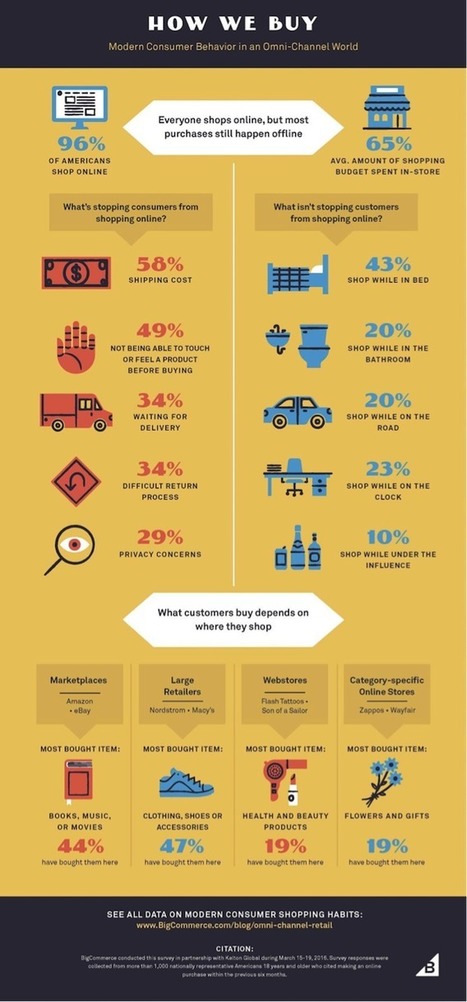

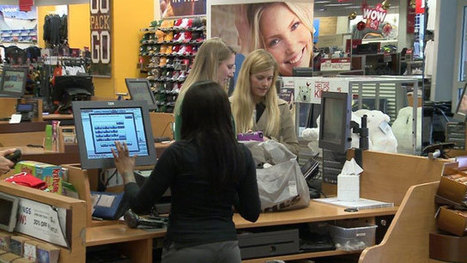



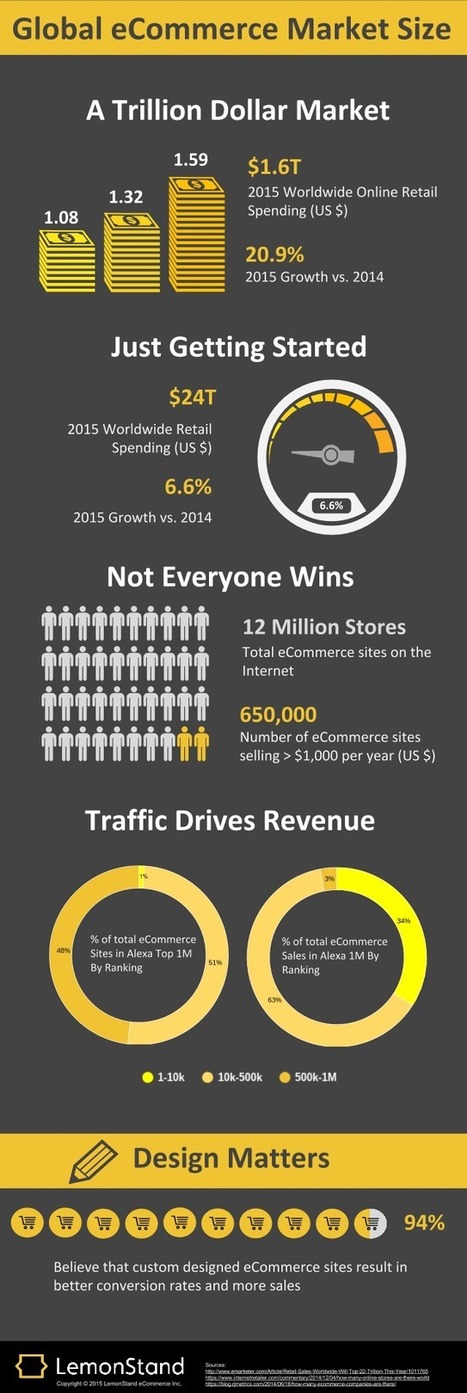


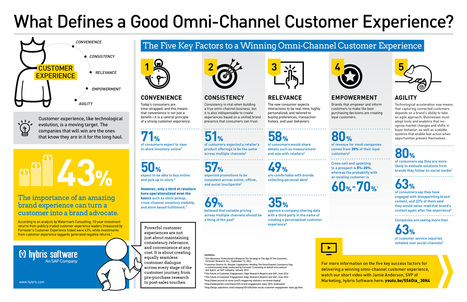
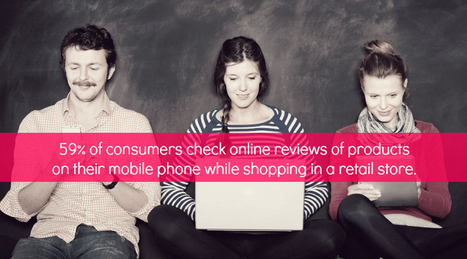

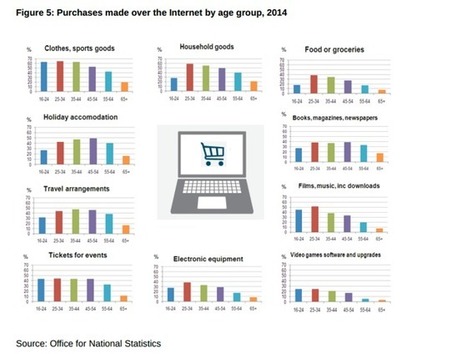
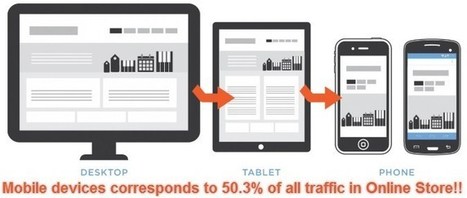





![Digital Effect on In-Store Shopping: 59% Shoppers Look for Coupons Online [Report] | Public Relations & Social Marketing Insight | Scoop.it](https://img.scoop.it/XtyM5CHF95GQPzRkhtOx4Dl72eJkfbmt4t8yenImKBVvK0kTmF0xjctABnaLJIm9)
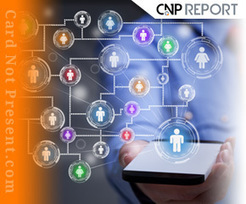
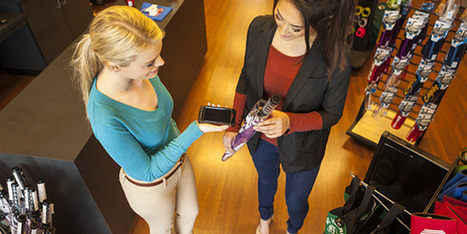

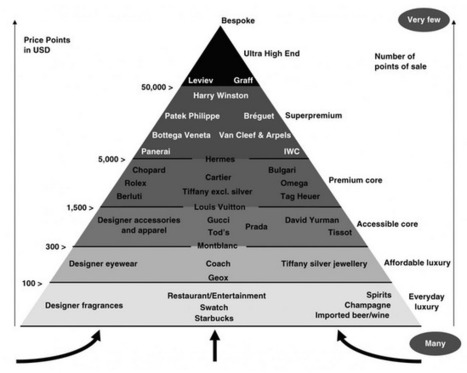








Adobe research says 57 of the 61 days during the holidays will exceed $1 billion in online sales as e-commerce sales are expected to grow 11% this holiday season.